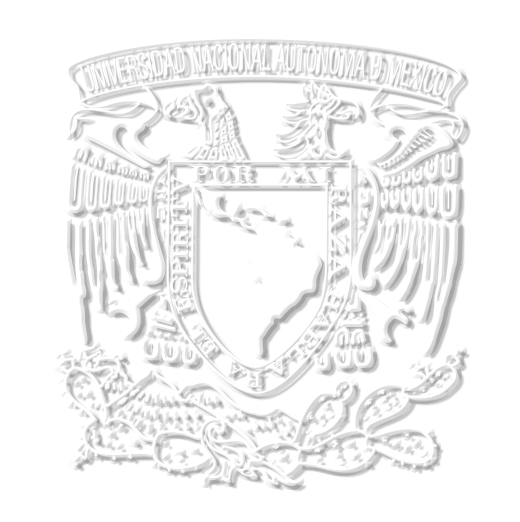Abstract
The objective of this study was to identify the rejection factors by areas of knowledge in the arbitration process of scientific articles received from 2008 to 2018 by a multidisciplinary journal. We analyzed 494 review assessments issued on 225 articles from different disciplines submitted to the multidisciplinary journal Tecnociencia Chihuahua. The journal’s overall rejection was 24.9 %. The lowest rejection rates were found in the areas of Engineering and Technology and Health and Sports, with 13.9 % and 15.2 %, respectively, while the highest rejection rates were noted in Education and Humanities and Economics and Administration, with 31.3 %, each. The most frequent factor for rejection was the lack of a valid methodological support in the study, followed by deficiencies in statistical analysis and discussion of results. When analyzing only the rejected articles, the study’s design, execution, and analysis features were the three aspects that most influenced the assessment final results. Knowing the most relevant factors in arbitration according to the area of knowledge can help improve consistency and transparency in manuscript review.
References
Adib, Souhail, y Vahid Nimehchisalem. 2021. “Reasons for Manuscript Rejection at Internal and Peer-Review Stages”. International Journal of Education and Literacy Studies 9 (3): 2-8. https://journals.aiac.org.au/index.php/IJELS/article/view/6779
Bhende, Vishal, Tanishq Sharma, Mathangi Krishnakumar, Anikode Subramanian Ramaswamy, Kanchan Bilgi y Saptak Mankad. 2024. “Decoding the Rejection Code: Understanding Why Articles Get Axed”. Cureus 16 (3), e56920. https://doi.org/10.7759/cureus.56920
Björk, Bo-Christer. 2019. “Acceptance Rates of Scholarly Peer-Reviewed Journals: A Literature Survey”. El Profesional de la Información 28 (4), e280407. https://doi.org/10.3145/epi.2019.jul.07
Casnici, Niccolò, Francisco Grimaldo, Nigel Gilbert y Flaminio Squazzoni. 2017. “Attitudes of Referees in a Multidisciplinary Journal: An Empirical Analysis”. Journal of the Association for Information Science and Technolog y 68 (7): 1763-71. https://doi.org/10.1002/asi.23665
D’Andrea, Rafael, y James O’Dwyer. 2017. “Can Editors Save Peer Review From Peer Reviewers?”. PLoS One 12 (10), e0186111. https://doi.org/10.1371/journal.pone.0186111
Dantas-Torres, Filipe. 2022. “Top 10 Reasons Your Manuscript May Be Rejected Without Review”. Parasites and Vectors 15 (1), 418. https://doi.org/10.1186/s13071-022-05543-w
Erfanmanesh, Mohammadamin. 2019. “Quantitative Portrait of Open Access Mega- Journals”. Malaysian Journal of Library and Information Science 24 (2): 115-31. https://doi.org/10.22452/mjlis.vol24no2.7
Ganga-Contreras, Francisco, Wendolin Suárez-Amaya y Liliana Pedraja-Rejas. 2020. “Erratas incurridas en la presentación de artículos en revistas indexadas iberoamericanas de las áreas de ciencias sociales y multidisciplinarias”. Interciencia 45 (6): 273-78. https://www.interciencia.net/wp-content/uploads/2020/07/03_6660_Com_Ganga_v45n6_6.pdf
Garg, Aarti, Sunanda Das y Hemant Jain. 2015. “Why We Say No! A Look Through the Editor’s Eye”. Journal of Clinical and Diagnostic Research 9 (10): JB01-05. https://doi.org/10.7860/JCDR/2015/17160.6699
Guthrie, James, Lee Parker y John Dumay. 2015. “Academic Performance, Publishing and Peer Review: Peering Into the Twilight Zone”. Accounting, Auditing and Accountability Journal 28 (1): 2-13. https://doi.org/10.1108/AAAJ-11-2014-1871
Hesterman, Chelsea, Christina Szperka y Dana Turner. 2018. “Reasons for Manuscript Rejection After Peer Review From the Journal Headache”. Headache: The Journal of Head and Face Pain 58 (10): 1511-18. https://doi.org/10.1111/head.13343
Higgins, Janet, Feng-Chang Lin y James Evans. 2016. “Plagiarism in Submitted Manuscripts: Incidence, Characteristics and Optimization of Screening—Case Study in a Major Specialty Medical Journal”. Research Integrity and Peer Review 1, 13. https://doi.org/10.1186/s41073-016-0021-8
Holst, Faye, Kim Eggleton y Simon Harris. 2022. “Transparency Versus Anonymity: Which Is Better to Eliminate Bias in Peer Review?”. Insights: The UKSG Journal 35, 16. https://doi.org/10.1629/uksg.584
Huber, Jürgen, Sabiou Inoua, Rudolf Kerschbamer, Christian König-Kersting, Stefan Palan y Vernon Smith. 2022. “Nobel and Novice: Author Prominence Affects Peer Review”. Proceedings of the National Academy of Sciences of the United States of America 119 (41), e2205779119. https://doi.org/10.1073/pnas.2205779119
Jackson, Jeffrey, Malathi Srinivasan, Joanna Rea, Kathlyn Fletcher y Richard Kravitz. 2011. “The Validity of Peer Review in a General Medicine Journal”. PLoS One 6 (7), e22475. https://doi.org/10.1371/journal.pone.0022475
Kalayarasan, Raja, y Chandrasekar Murugesan. 2022. “How to Handle a Manuscript Rejection?”. International Journal of Advanced Medical and Health Research 9 (2): 120-23. https://doi.org/10.4103/ijamr.ijamr_241_22
Lamb, Christopher, y Clifford Adams. 2015. “Acceptance Rates for Manuscripts Submitted to Veterinary Peer-Reviewed Journals in 2012”. Equine Veterinary Journal 47 (6): 736-40. https://doi.org/10.1111/evj.12376
Lee, Carole. 2012. “A Kuhnian Critique of Psychometric Research on Peer Review”. Philosophy of Science 79 (5): 859-70. https://doi.org/10.1086/667841
Lee, Carole, Cassidy Sugimoto, Guo Zhang y Blaise Cronin. 2013. “Bias in Peer Review”. Journal of the American Society for Information Science and Technolog y 64 (2): 2-17. https://doi.org/10.1002/asi.22784
Menon, Vikas, Natarajan Varadharajan, Samir Kumar Praharaj y Shahul Ameen. 2022. “Why Do Manuscripts Get Rejected? A Content Analysis of Rejection Reports From the Indian Journal of Psychological Medicine”. Indian Journal of Psychological Medicine 44 (1): 59-65. https://doi.org/10.1177/0253717620965845
Schulz, Robert, Adrian Barnett, René Bernard, Nicholas Brown, Jennifer Byrne, Peter Eckmann, Malgorzata Gazda, et al. 2022. “Is the Future of Peer Review Automated?”. BMC Research Notes 15 (1), 203. https://doi.org/10.1186/s13104-022-06080-6
Sepúlveda-Vildósola, Ana Carolina, Juan Miguel Abdo-Francis, Patricia Clark, Eduardo Esteban Montalvo-Javé y Raúl Carrillo-Esper. 2023. “Good Editorial Practices”. Gaceta Médica de México 159 (2): 87-90. https://doi.org/10.24875/GMM.23000073
Severin, Anna, y Joanna Chataway. 2021. “Purposes of Peer Review: A Qualitative Study of Stakeholder Expectations and Perceptions”. Learned Publishing 34 (2): 144-55. https://doi.org/10.1002/leap.1336
Siler, Kyle, Kirby Lee y Lisa Bero. 2015. “Measuring the Effectiveness of Scientific Gatekeeping”. Proceedings of the National Academy of Sciences of the United States of America 112 (2): 360-65. https://doi.org/10.1073/pnas.1418218112
Stephen, Dimity. 2022. “Peer Reviewers Equally Critique Theory, Method, and Writing, With Limited Effect on the Final Content of Accepted Manuscripts”. Scientometrics 127 (6): 3413-35. https://doi.org/10.1007/s11192-022-04357-y
Suls, Jerry, y René Martin. 2009. “The Air We Breathe: A Critical Look at Practices and Alternatives in the Peer-Review Process”. Perspectives on Psychological Science 4 (1): 40-50. https://doi.org/10.1093/ptj/44.11.970
Thelwall, Mike. 2023. “Journal and Disciplinary Variations in Academic Open Peer Review Anonymity, Outcomes, and Length”. Journal of Librarianship and Information Science 55 (2): 299-312. https://doi.org/10.1177/09610006221079345
UACH (Universidad Autónoma de Chihuahua). 2024. “Sobre la revista”. Tecnociencia Chihuahua Revista de Ciencia y Tecnología. https://revistascientificas.uach.mx/index.php/tecnociencia
Ware, Mark, y Michael Mabe. 2015. The STM Report: An Overview of Scientific and Scholarly Journal Publishing. La Haya: Asociación Internacional de Editores Científicos, Técnicos y Médicos. https://digitalcommons.unl.edu/scholcom/9/
Weller, Ann. 2002. Editorial Peer Review: Its Strengths and Weaknesses, 2ª ed. Medford, Nueva Jersey: Information Today.
Zuckerman, Harriet, y Robert Merton. 1971. “Patterns of Evaluation in Science: Institutionalisation, Structure and Functions of the Referee System”. Minerva 9 (1): 66-100. https://doi.org/10.1007/BF01553188
Authors:
- They must sent the publication authorization letter to Investigación Bibliotecológica: archivonomía, bibliotecología e información.
- They can share the submission with the scientific community in the following ways:
- As teaching support material
- As the basis for lectures in academic conferences
- Self-archiving in academic repositories.
- Dissemination in academic networks.
- Posting to author’s blogs and personal websites
These allowances shall remain in effect as long as the conditions of use of the contents of the journal are duly observed pursuant to the Creative Commons:Attribution-NonCommercial-NoDerivatives 4.0 license that it holds. DOI links for download the full text of published papers are provided for the last three uses.
Self-archiving policy
For self-archiving, authors must comply with the following
a) Acknowledge the copyright held by the journal Investigación Bibliotecológica: archivonomía, bibliotecología e información.
b) Establish a link to the original version of the paper on the journal page, using, for example, the DOI.
c) Disseminate the final version published in the journal.
Licensing of contents
The journal Investigación Bibliotecológica: archivonomía, bibliotecología e información allows access and use of its contents pursuant to the Creative Commons license: Attribution- Non-commercial-NoDerivatives 4.0.

Investigación Bibliotecológica: archivonomía, bibliotecología e información by Universidad Nacional Autónoma de México is licensed under a Creative Commons Attribution-NonCommercial-NoDerivatives 4.0 Internacional License.
Creado a partir de la obra en http://rev-ib.unam.mx/ib.
This means that contents can only be read and shared as long as the authorship of the work is acknowledged and cited. The work shall not be exploited for commercial ends nor shall it been modified.
Limitation of liability
The journal is not liable for academic fraud or plagiarism committed by authors, nor for the intellectual criteria they employ. Similarly, the journal shall not be liable for the services offered through third party hyperlinks contained in papers submitted by authors.
In support of this position, the journal provides the Author’s Duties notice at the following link: Responsibilities of authors.
The director or editor of the journal shall notify authors in the event it migrates the contents of the journal’s official website to a distinct IP or domain.








